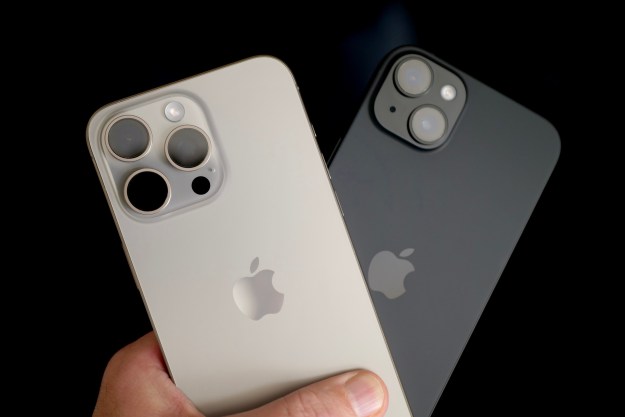Another redesign is coming for your next iPhone. First reported by the Dutch outlet LetsGoDigital , the next iPhones to grace us with their presence and deplete the contents of our wallets will likely be completely notchless, possibly contain an under-screen front camera, and re-integrate TouchID while eliminating FaceID. The expected updates are rumored to be scheduled for 2020 or 2021.
According to LetsGoDigital, Apple filed a patent in Japan for a new design without a notch, and without FaceID: “Instead the new iPhone incorporates an in-display fingerprint sensor and an under-screen camera,” the company wrote.
Remember when Apple kicked TouchID to the curb? The year was 2018, practically an epoch ago in internet time. Now it’s back, this time embedded under the touchscreen, rather than in the “home button” that Apple has phased out in the latest models.
This technology, as Digital Trends has previously reported, is notoriously finicky: See the example of the Samsung Galaxy S10 as to why. The in-screen fingerprint scanner in those phones, which were released in March, was notoriously easy to fool. Users who put screen protectors on their phones found that anyone could simply touch the sensor and the phone would unlock. The assumption at the time was that any kind of screen protector interfered with the sensor’s ultrasonic technology that read the shape and depth of fingerprint ridges.
It’s unclear if Apple has yet found a way to improve on this, but according to LetsGoDigital, these phones are slated to debut in 2021.
All this looks to be in the name of eliminating the already-thin edges around the front of the phone, and further push out the size of the screen. This might, however, mean that FaceID will be phased out, according to the LetsGoDigital.
Earlier in December, Apple analyst Ming-Chi Kuo published a report also predicting — in addition to the above bezel- or notchless phone with the in-screen cameras — that higher-end Apple products will have no lightning ports come 2021, meaning it would rely solely on wireless charging. Kuo also predicted there would be five new models of iPhone on shelves in 2020, with rumors of 5G support in four of them.
Editors' Recommendations
- Here’s how Apple could change your iPhone forever
- Your iPhone just got a new iOS update, and you should download it right now
- Stop putting your wet iPhone in rice — seriously
- The next iPhone SE may steal this feature from the iPhone 15
- Apple is updating one of the oldest apps on your iPhone




